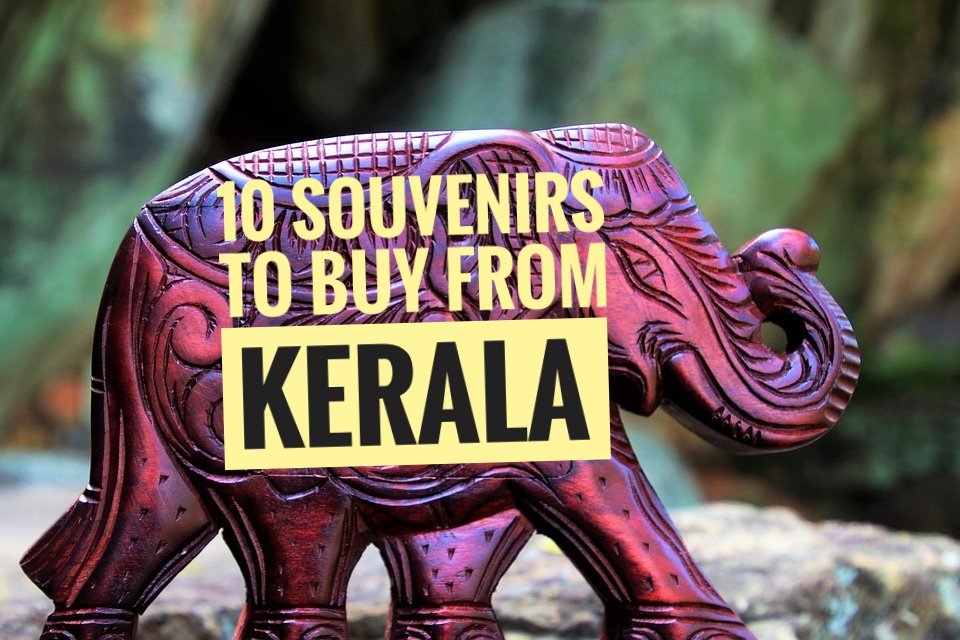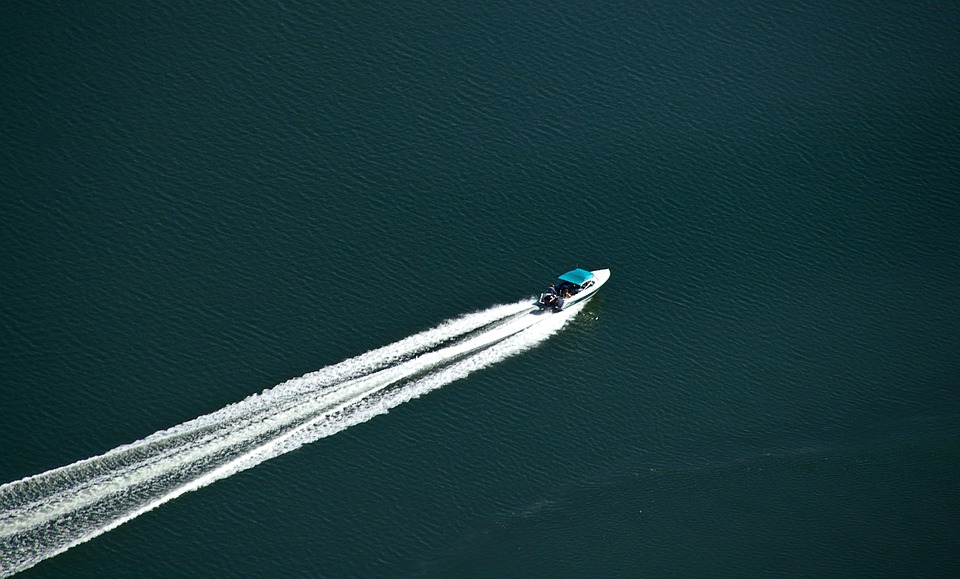According to Hindu mythology, Kerala was created by Lord Parasurama, an incarnation of Lord Vishnu by throwing his axe across the sea to create new land for his devotees to live peacefully. So, Kerala is God’s own creation, hence it is called God’s own country!
Named as one of the ten paradises of the world by National Geographic Traveler, Kerala is famous especially for its ecotourism initiatives and beautiful backwaters. Its unique culture and traditions, coupled with its varied demography, have made Kerala one of the most popular tourist destinations in the world
Life in God’s Own Country can be experienced with thick coconut groves, hazy hills, beautiful backwaters, lush paddy fields and dense forests swarming with rare plants and exquisite wildlife, all these and much more form the backbone of what it actually means to experience a land famous for being ‘God’s Own Country’. It has already emerged as one of the must see destination in a life time. So once you visited the Gods own country, don’t forget to buy these items. These are the things to add in your to-buy-list.
1. ARANMULA VALKANNADI

Aranmula, a village in the district of Pathanamthitta which is well known for its ancient temple dedicated to Lord Krishna also known as Parthasarathy. Aranmula village is also famous for its holy river Pamba, where the annual regatta of snake boats happens.
The unique metal mirror – Aranmula Valkannadi is the result of Kerala’s rich cultural and metallurgical traditions. They have great historical and cultural value. As per local belief the handmade Aranmula Valkannadi is considered as an auspicious object kept in households for bringing prosperity, luck and wealth They are produced by one extended family in Aranmula. The uniqueness of mirror lies in the fact that it is not made of glass. The exact metals used in the alloy are mixed with copper and tin before being polished for several days in a row to achieve their reflective surface. In a normal mirror, the image is formed from the inner surface. However, in Aranmula Kannadi, light can get reflected from the outer surface. Noted for outstanding beauty and shrouded in secrecy, the Aranmula Valkannadi is considered a medieval marvel in the annals of metallurgy.
Tip: 1. How to know the quality of Aranmula Valkannadi? While buying a mirror, to know the quality of reflection, the following example would be sufficient. When you touch a piece of paper on the surface of an ordinary mirror, a gap remains between the paper and the image produced. But, in the case of the Aranmula metal mirror, there will be no gap between the image and the object.
2. How to Keep Aranmula Valkannadi? Never Keep the Aranmula Valkannadi in a closed box. For the proper maintenance of the metal mirror, requires the mirror to be kept under room temperature and also away from heat and dust. There is a prescribed method to wipe the mirror to remove finger stains and other marks on it. The wiping movement is restricted to a particular direction and not in all.
2. NETTIPATTAM (ELEPHANT CAPARISON)
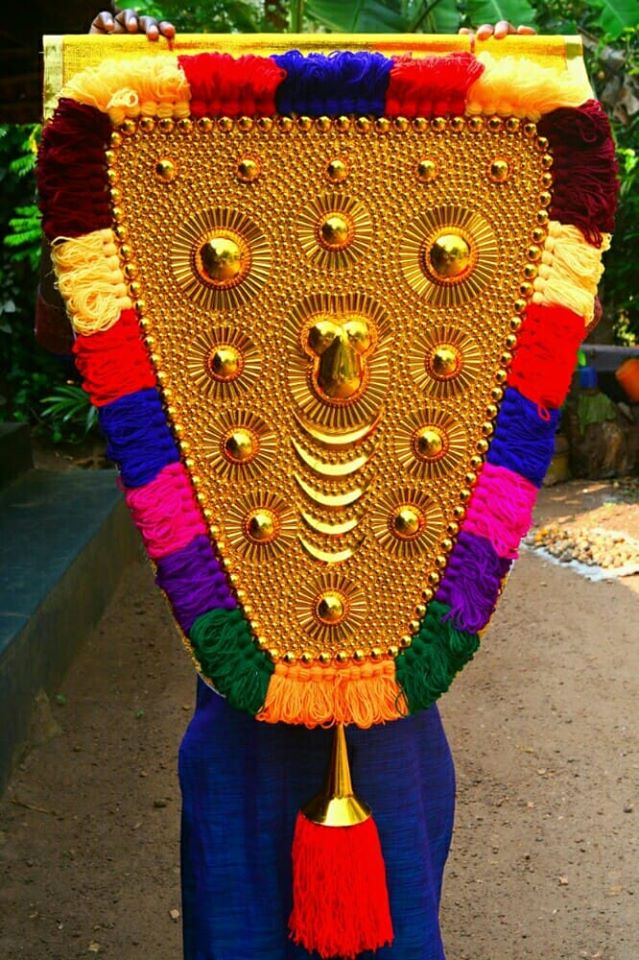
Nettipattam is a Kerala traditional item which is used to decorate elephant in the time of Poorams and festivals . Nettipattam is a glittering ornament that adorns the forehead of an elephant. The original nettipattam is made in copper and pure gold is plated over it. The golden bubbles are stitched with thread in the velvet background. This is also used in the Old palaces and Homes for the symbol of prosperity .
The Fancy Nettipattam is the commonly available souvenir in the market. .This Nettipattam is made in recycled Plastics and the cost and weight of Nettipattam is Lower than the original Nettipattams. This Nettipattam can fold and carry easily. The design of this Nettipattam differ from the traditional one.
3. NETTOOR PETTI – TRADITIONAL JEWEL BOX

The Nettoor Petti is a beautiful handicraft that borrows its name from the place of its origins, Nettoor town in Malabar coast of Kerala. A jewel box, nettoor Petti (means box) is fully handmade and usually made from Rose wood. It was the ethnic jewel box of the Kerala woman, which once a mark of the influential families of the land. Decades ago, the Nettoor Petti stored the most precious gems of the erstwhile royal families of Kerala in its soft velvet interiors. Today, the jewel box of Kerala is a heirloom piece for many families and occupies pride of place in many living rooms. The box usually made of rosewood is fully handcrafted.
The traditional Nettoor petti is made according to the principles of Thachushastram, (Kerala’s ancient architectural science). Every box is made of 7 pieces of wood in its lower half and 4 parts in its top half, cut to precise measurements using tools specific to this industry. Quality Rosewood or Mahogany wood is sourced from around the state and polished to perfection for days before they come together in the box. The wood is put together with nails that are made exclusively by hand for the Nettoor petti. The box once put together is then painted with earth colours inspired by Kerala murals. Over this comes the next intricate piece of detailing – bright brass elements that are also hand crafted. The delicately designed brass work artistically covers the corners and also is used to make the elaborate lock of the box. Today, this richly embellished box with its conical lid is a collector’s item. These jewel boxes are available with art works in brass, while others, apart from the brass work, bear colorful designs on wood. This aristocratic unique handicraft product from Kerala is often given as a gift item and is used as a artifice for interior decoration
4. KATHAKALI MASK
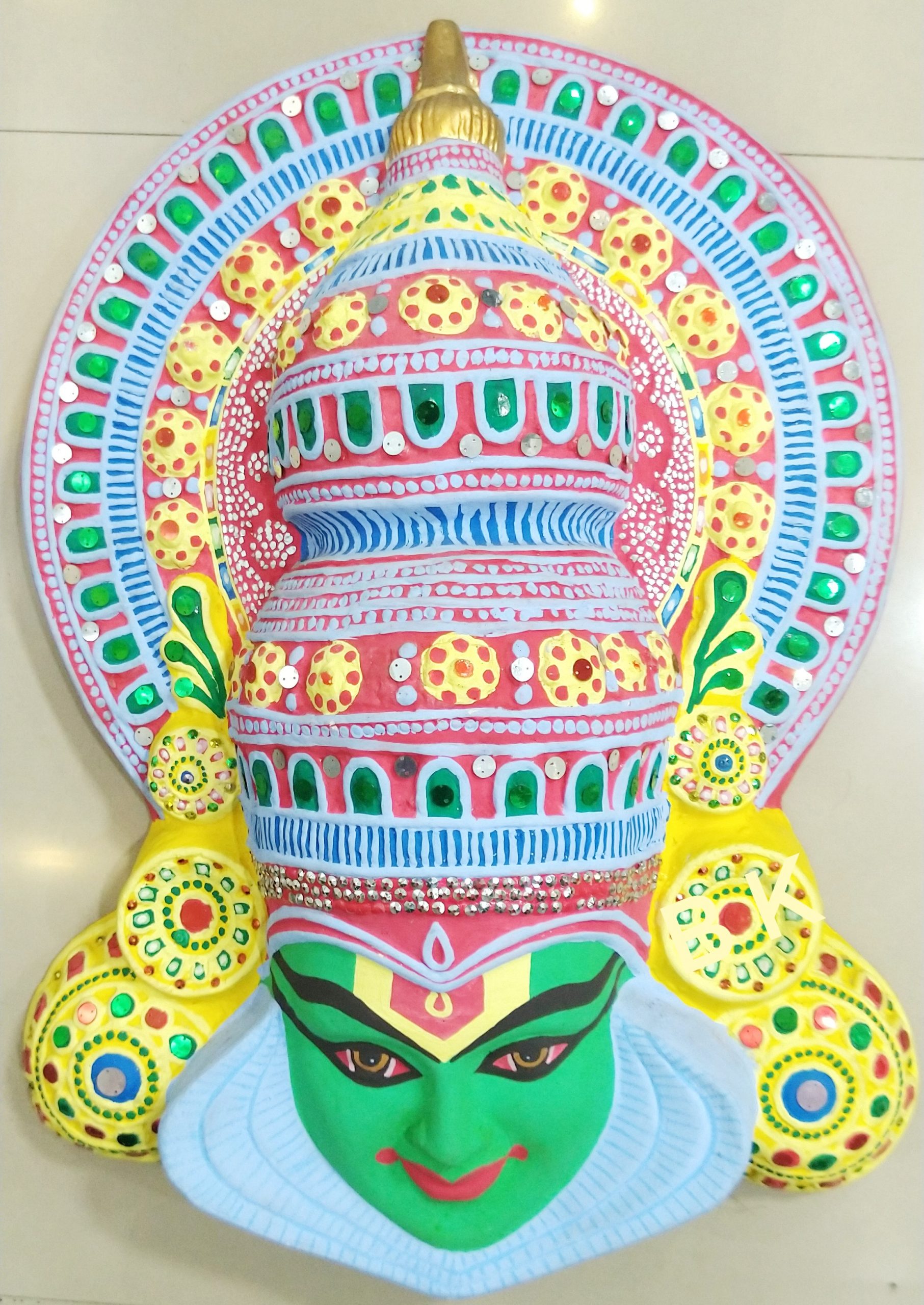
Kerala is a epitome of art, craft and culture of India. Kerala is one of the main centers where the conventional east blends with activist west. Though colonial influences had introduced various changes, yet the tradition of Kerala remained untouched, which is well evident in the arts and crafts of the state. One of the most renowned forms of art form in Kerala is Kathakali, which holds a huge significance in the history and tradition of Kerala.
A Kathakali performance, like all classical dance arts of India, synthesizes music, vocal performers, choreography and hand and facial gestures together to express ideas. Kathakali is recognized for its unique form of make-up and dress. Kathakali Masks of Kerala are nothing but masks that replicate the face of the Kathakali artists with the colors and make up that are applied on the artists’ face. The Kathakali Masks are available as souvenirs and show pieces. The multi-hued crafts and the works of art is a popular village industry of Kerala. The detailed and the intricate designs give an attractive edge to the masks. It is believed that keeping the Kathakali mask in the living rooms helps the evils away.
5. KERALA SPICES
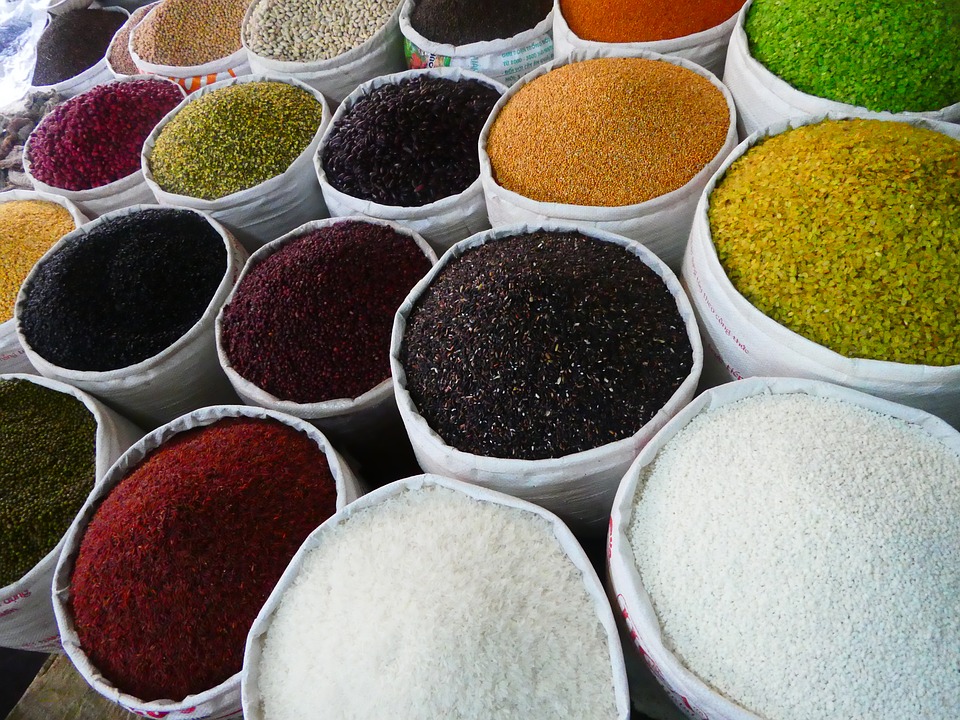
Kerala has always been famous for rich and exotic spices and that was also the main reason why ancient traders followed the ‘spice routes’ (to Kerala) and established trade centers in the state. Kerala is home to a variety of spices: pepper (known as Black gold), vanilla (Flavor of the world), cardamom (queen of spices), clove (The Dentist), cinnamon (Best antioxidant), nutmeg, ginger(the best digestive expert) and turmeric (The natural antiseptic).
The warm, tropical climate of central Kerala, the misty hill stations with their silty soil rich in organic matter and reasonable amount of rainfall contribute to the production of spices in Kerala. Irrespective of cultural, religious and other differences, spices occupy a special place in providing a unique flavour to the culinary specialties of Keralites in their daily life. In Ayurveda also, every spice has its own significance and importance. So Kerala, Gods own country is not only a spice hub of India, but also it is famous as a spice hub of world.
6. MURAL PAINTINGS
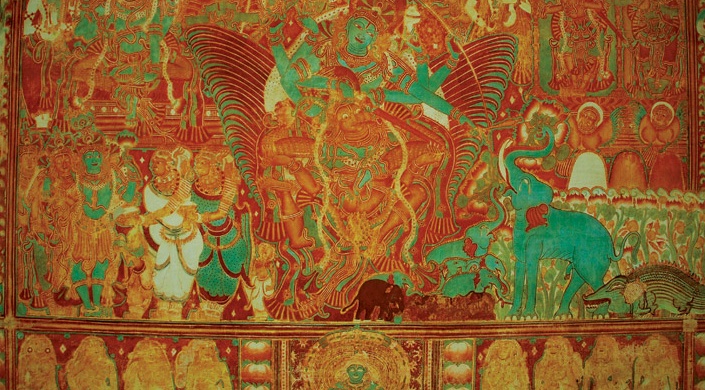
Kerala mural paintings depicts Hindu mythology and legends. Mostly this seen in temples, churches and royal palaces. The scriptural basis of these paintings can be found in the Sanskrit texts. It is also a symbol of royal patronage.
The characters in the murals are coloured according to their characteristics as illustrated in the relevant Hindu mythological scriptures. Spiritual, divine and dharmic characters are depicted in shades of green. Those influenced towards power & materialistic wealth are painted in shades of red to golden yellow. Evil, wicked and mean characters are generally painted in black or white or black. The materials used in mural art work like pigments, brushes, gum etc. are all taken made of natural materials like minerals and plants. Colors are prepared from vegetables, mineral pigments and squeezed plant extract.
An ideal souvenir to be treasured for a lifetime, Kerala murals are a symbol of natural beauty and grace, elegance and simplicity and of pious devotion. It is this humility that helps this art form overcome the ravages of civilization and time
7 COIR ARTIFACTS
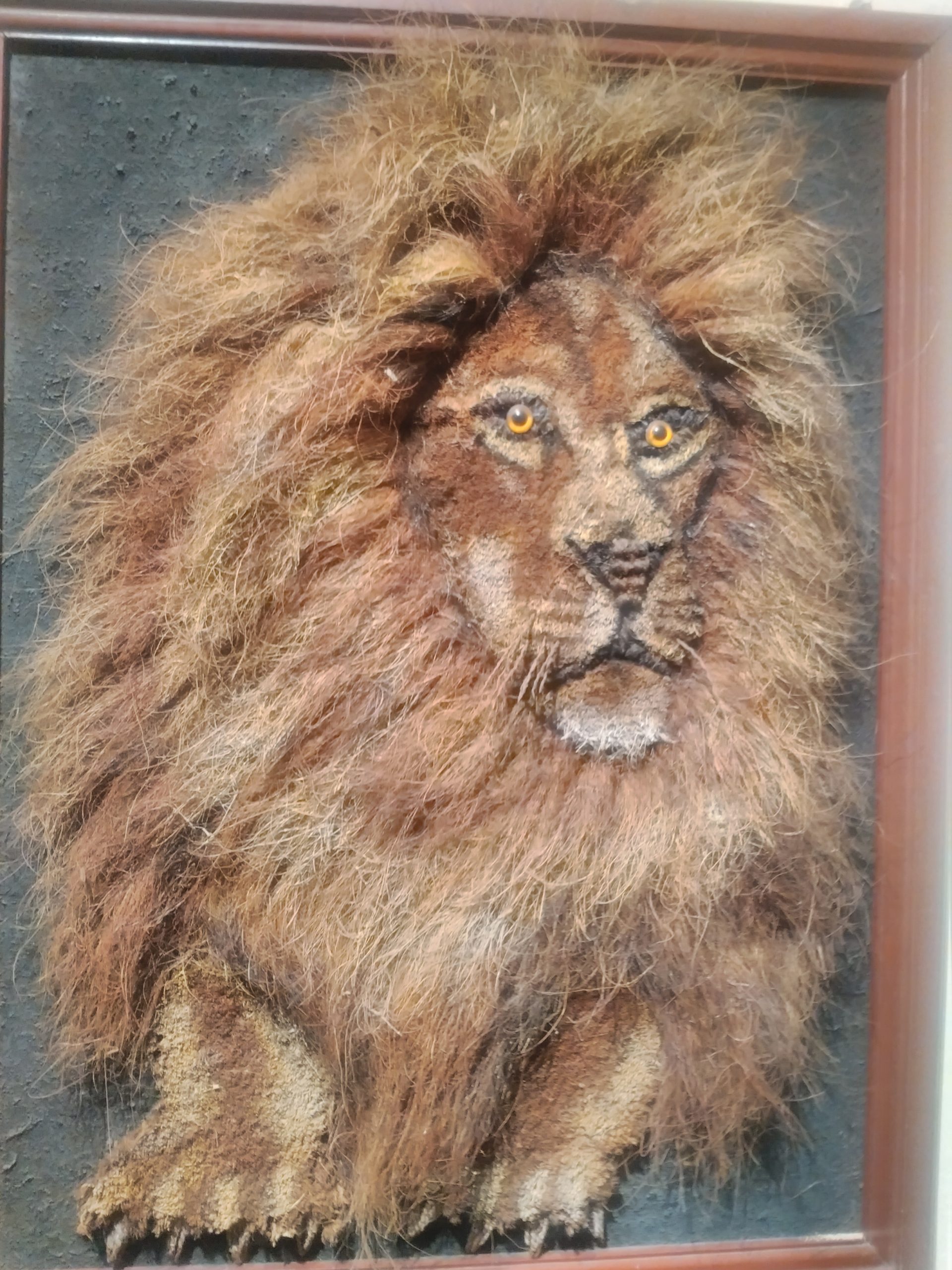
Kerala is the land of coconut trees. Everywhere in Kerala you can see the lush green vegetation of coconut. Kerala (Kerlam in Malayalam) is derived from this tree (“Kera” in Malayalam language means Coconut and “Alam” means Land, thus Keralam = Land of Coconut). One of the most commonly seen tropical trees in Kerala is the Coconut tree. In fact, even the name Everything from Kerala’s culture to its dishes is evolved around the Coconut tree.
Alappuzha is famous for its backwaters and nerve centre of Kerala’s famous Coir industry. Here, one can see coconut husks being beaten into fiber for making beautiful mats and other coir products. One third of the villagers actively involved in the production of Coir. The women are mainly involved in the yarn spinning sector and the men in the product-weaving sector. Coir Industry enjoys the status as the largest Cottage Industry in the Kerala, giving employment to over a million people. You can buy so many varieties of products made of coir right from daily used items to show pieces.
8. HOUSEBOAT MINIATURE
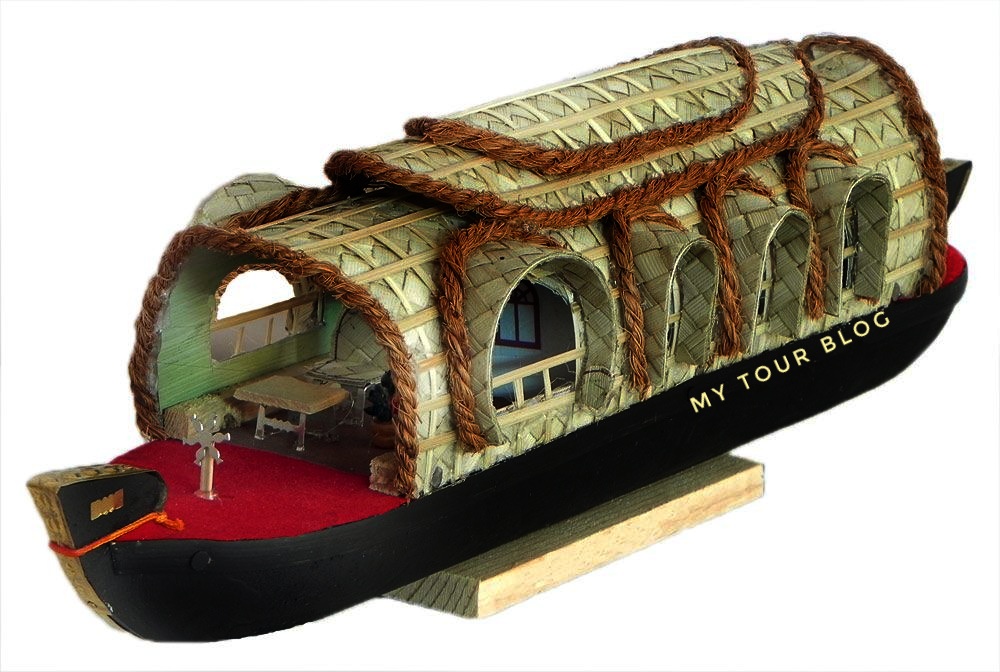
The Houseboat has become a widely recognized symbol of the Kerala backwaters. Exploring backwaters in a houseboat is one of the must things to do in Kerala and the best way to experience the Kerala’s village life , enjoying the beauty through the palm-fringed backwaters – a chain of criss cross lakes, canals and lagoons. The lakes, canals and rivers connect these water bodies forming a very useful inland water navigation system.. What else is better than experiencing it as a life time experience !!! You can make this trip most memorable by keeping a souvenir while going back home. These beautifully crafted wooden miniature houseboats will make your travel experience most memorable – a priceless gift!!!
9. BRASS BROIDERED COCONUT SHELL CRAFT.

As coconut is one of the main vegetation in Kerala, the use of coconut and its bi-products also becomes the part of the industry of the state. Though the coconut shell craft is also widespread in other states of India, the brass broidered variety is practiced only in Kerala. This art requires great skill on the part of the artisan and each product is unique as it is handcrafted by the artisan in the extremely hard shell of the coconut. The main centres of production in Kerala are located in Thiruvananthapuram and Kozhikode Districts
10 TRADITIONAL KASAVU SAREE

Kasavu is a hand woven cream colored saree with gold border, worn by Malayalee women. From the land of ‘God’s own country’, Kerala’s Kasavu, emerges as one of the finest traditional saris which define the essence of the beauty of every woman in Kerala
In Kerala, sari is regarded as the cultural costume. But Kasavu saree is worn especially during festivals, dance programs, and special occasions. During the past Kasavu was treated as royal dress in Kerala as the original garments had pure gold borders, whereas the newer current versions have red, green, orange colors along with golden color, to make them look more attractive. Now Power looms are replacing handlooms but the machine-made fabric differs in texture from the original, though they are cheaper to produce on a mass scale.
Hope you have made a bucket list for shopping for your next visit to Gods Own Country !!!


